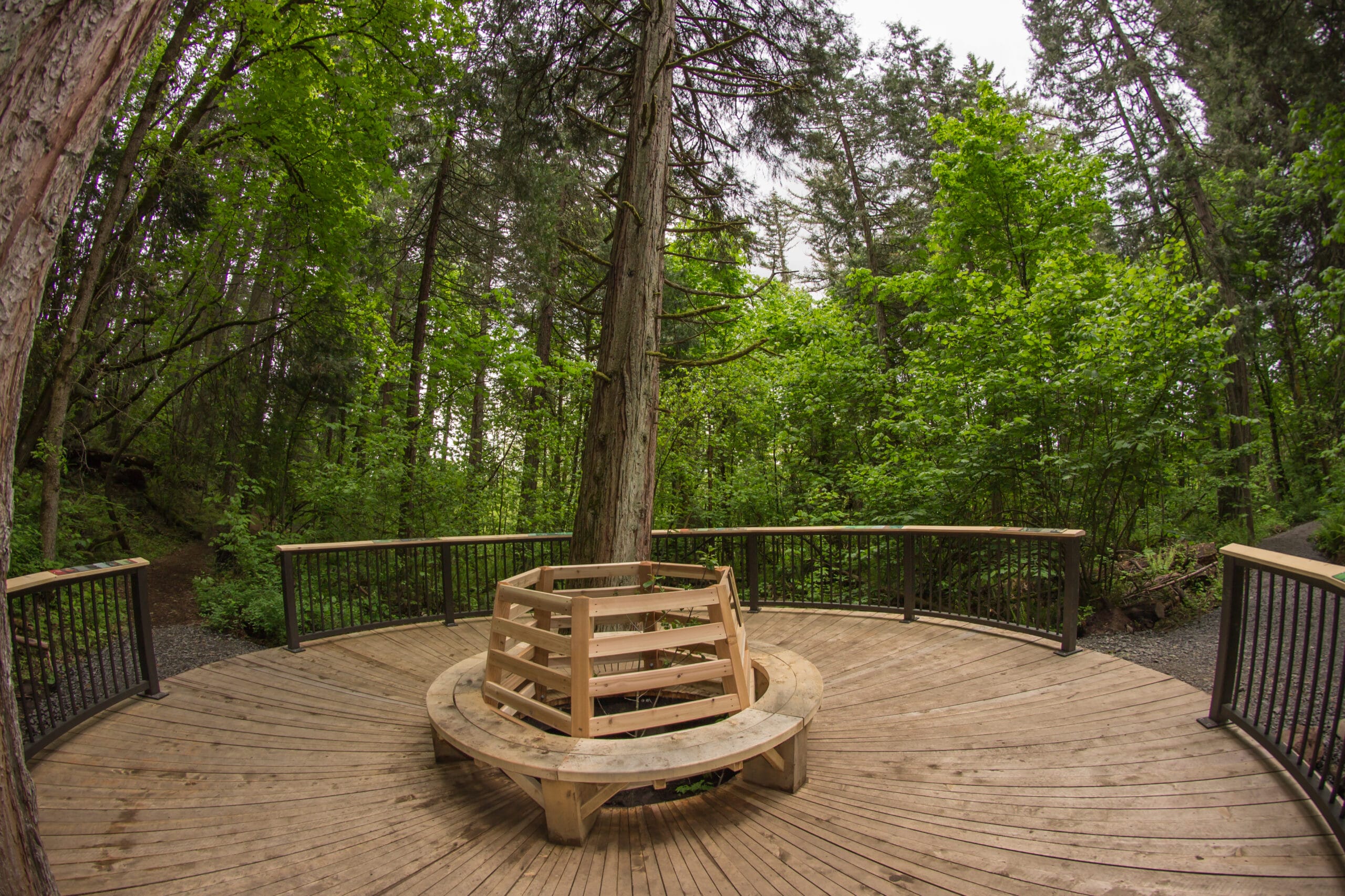When we remember that everything is connected, we bring the world together.
Mount Pisgah Arboretum is reconnecting people with nature through interactive educational experiences.
Check out this fantastic article in The Oregonian about our work!
Want to support our Interpretive Program?

Our Aim
At Mount Pisgah Arboretum, our mission is to engage people with nature through interactive learning and stewardship. We believe that the more people are inspired to learn about and engage with the natural world, the more they will honor and preserve it for future generations.
Mount Pisgah Arboretum has been teaching people about this special place for over forty years. The Arboretum’s unique 209-acre site contains a wide range of ecosystems in a relatively small area. From beautiful oak savannas to lush Douglas-fir forests, from vibrant wetlands to ancient incense-cedars, this is the perfect setting to teach people about Southern Willamette Valley ecology.
The Arboretum receives about 400,000 visits annually. Right now, only about 3% of visitors take part in our educational programs. Through our interpretive program, we plan to reach the other 97%.

Our Exhibits
Visitors will be invited to experience, and to engage with their environment. The exhibits are designed to fit into their surroundings, and reflect the encompassing habitat. Learning about nature through our exhibits is both an active and sensory experience that combines scientific investigation with emotional connections. Content is accessible and relevant to all ages, cultures, and learning styles. We hope our exhibits inspire exploration in nature!

Wetlands Exhibit
Designed to blend with its surroundings, our Wetlands Exhibit is constructed of branches woven through a painted aluminum superstructure. Visitors walking on one of our Water Garden paths find themselves entering a woven tunnel that opens up into a spacious enclosure. Once inside, they find interactive panels with colorful images, clues and information about the plants, animals, and natural systems around them. Windows in the exhibit open into the surrounding wetland.

Incense-cedar Exhibit
Sponsored by Mountain Rose Herbs
Our Incense-cedar Exhibit highlights a forest full of life, and invites a deeper investigation of the dynamic forces that shape the forest. Stories at either end of the trail provide glimpses into the ecology of the forest, and cues for further exploration as we provide the tools to see the forest in a different way. At the center of the trail, an expansive circular deck provides a spot for quiet observation and further learning.

Oak Woodlands Exhibit
The Oak Woodlands exhibit investigates how seasonal changes create surprising interactions between species which find a home in and among the Oregon white oaks. It invites discovery with interactive elements that allow visitors to engage in kinesthetic learning. The centerpiece of the exhibit is a 10-foot-tall metal tree sculpture with a crank, which when turned, emulates the change in canopy cover through the seasons, and rotates stories of how the changes in light affect the ecosystem. Near the tree are four smaller “satellite” exhibits, providing for deeper learning experiences.

Oak Savanna Exhibit
This exhibit consists of two meditative paths with scattered vignettes that share some of the cultural and ecological outcomes of regular burning. These paths converge in the center around a planter showcasing a number of native plants that were important traditional food sources, and which benefited from regular burning. A bench encircles the outer half of the planter, offering expansive views of the savanna and a chance to pause and reflect on the statement embedded in stone at one’s feet, “the oak savanna will not exist without humans.”
The exhibit explores the intersection of human culture and the natural environment through the story of how the native Kalapuya people managed the land in the Willamette Valley for millennia, and how their use of fire as a management tool ensured the existence of a biodiverse community—one which is now at risk of disappearing. This exhibit celebrates the oak savanna as a cultural landscape and aims to honor these ancestral Kalapuyan lands and the life that thrived in the savanna.
Timeline
Four exhibits are open to the public, and new trail signs were installed in 2019 (thanks to a generous grant from REI). We are currently pausing further exhibit development while we improve our existing installations.
How you can help!
Thanks to grants, business sponsorships, and generous gifts from individual donors our interpretive program is more than half-way funded! Mount Pisgah Arboretum’s programs and projects have always been generously supported by the community, and grassroots funding has been key to our success. For this project, individual donations, both large and small will play an important role. Donating is easy, and our monthly giving program provides an easy way to make a big difference with incremental amounts.
Opportunities for Recognition
Donors who give $1,000 or more will be acknowledged on a plaque near the entrance kiosk. Donors may also choose to sponsor all or part of an exhibit. Contact Executive Director Brad van Appel for information about exhibit sponsorship.
In-Kind Contributions & Volunteering
Contact Interpretation Coordinator August Jackson to ask about giving non-monetary support to the interpretive program.
For more information about the interpretive program,
contact August Jackson at 541-741-4110 or
[email protected]




